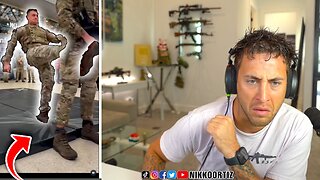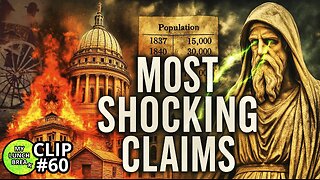Premium Only Content

Coronet Film "Capitalism"
Capitalism
Overview
David A. Smart established the company with his brothers Alfred and John in 1934,[2] but the first titles registered for copyright date from 1941 (beginning with Aptitudes and Occupations). Over time, a studio was set up in Glenview, Illinois. Smart was the publisher of Esquire and Coronet magazines, and the film company was named for the latter. The film company outlived the magazine; it ceased publication in 1976.
In addition to producing military instructional films during World War II, Coronet found success in its early years with its full-color films about common birds such as the ruby-throated hummingbird (a 1942 release), many of which were filmed by Olin Sewall Pettingill Jr. and Dr. Arthur A. Allen. One of the company's hallmarks was that many of its titles were shot in color Kodachrome a few years ahead of competing classroom-film companies. Production costs were controlled by selling both color and black-and-white prints and charging a much lower fee for the latter. As many school educators economized, fewer color prints are viewable today than are those in black and white.
After David Smart’s death in 1952, his brother John and Jack Abraham took over. The quantity of Coronet’s output had surpassed that of the classroom-film industry’s leader Encyclopædia Britannica Films (initially ERPI Classroom Films), with an 11-minute or longer film completed nearly every week. While its main rival strove for more cinematic films, the narration included in the 1950s and 1960s Coronet films was often of a dry and didactic tone. However, Coronet produced some well-made travelogues boasting good cinematography in addition to an annual quota of animal-related films. Starting in 1957, a Special Productions unit headed by Bob Kohl and Tom Riha added some more ambitious and prestigious independent productions to Coronet's more economically made catalog titles.
truthsocial.com/@AmericanMediaEphemera
-
 1:02:00
1:02:00
VINCE
3 hours agoThe Left's Demented Fantasies Shatter | Episode 117 - 09/03/25
135K71 -
 59:34
59:34
Nikko Ortiz
1 hour agoPainful Military Fails
5K -
 LIVE
LIVE
LFA TV
5 hours agoLFA TV ALL DAY STREAM - WEDNESDAY 9/3/25
4,575 watching -
 LIVE
LIVE
MYLUNCHBREAK CHANNEL PAGE
3 hours agoHistory’s Most SHOCKING Claims?
705 watching -
 LIVE
LIVE
Caleb Hammer
3 hours agoThe First LGBT Divorce On Financial Audit
105 watching -

Badlands Media
2 hours agoBadlands Daily: September 3, 2025 (#2)
30.3K1 -
 LIVE
LIVE
Jim Jordan
2 hours agoEurope’s Threat to American Speech and Innovation
424 watching -
 DVR
DVR
The State of Freedom
6 hours agoFLF: #16 Delivering the Truth Comes at a Cost w/ Joe Hoft
2.85K -
 31:01
31:01
Rethinking the Dollar
2 hours agoWe're In A NEW Monetary Reality! Xi & Putin Knows How This ENDS | Morning Check-In: Let's Talk...
10.2K -
 LIVE
LIVE
House Committee on Energy and Commerce
3 hours agoExamining Opportunities to Advance American Health Care through the Use of AI Technologies
19 watching